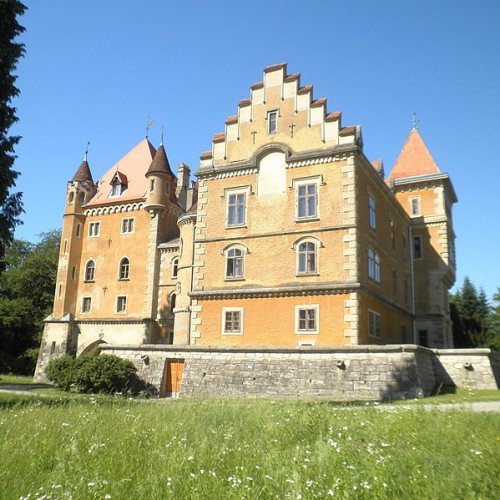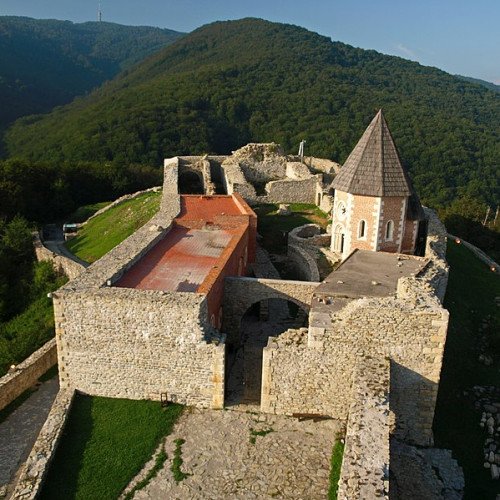Castles of "Croatia" MARUŠEVEC CASTLE vs MEDVEDGRAD

MARUŠEVEC CASTLE
Maruševec is a castle located in the municipality of the same name within Varaždin County, Croatia. The castle dates back to 1547. Throughout the mid 19th century, again the castle was under numerous hands, until it was bought by Arthur Schlippenbach. He enlarged the castle as it stands today and refurbished it with decor of the period in 1877. In 1881, Count Schlippenbach died in Cairo. In 1883 Maruševec and Čalinec Castle were purchased by Oskar de Pongratz. The Pongratz noble family reconstructed the garden upon the plans of the Swedish architect Carl Gustav Swensson, and made some minor alterations to the building in 1901 such as tapestries on the staircases illustrating hunting scenes, the work of Monnaccelli from Rome. The castle was owned by the Pongratz noble family until 1945. That year the Independent State of Croatia was defeated, resulting in the establishment of communist-run Yugoslavia which confiscated most of the former Austro-Hungarian Croatian nobility's property. As part of this, Maruševec was nationalized and the Pongratz's emigrated to Graz, Austria. In the 2000s, the government of Croatia began the process of returning the property to the heir of the Pongratz family, count Oskar Pontgratz. It is now in their ownership.
Statistics for this Xoptio

MEDVEDGRAD
Medvedgrad (pronounced Croatian for bear-fort; Hungarian: Medvevár) is a medieval fortified town located on the south slopes of Medvednica mountain, approximately halfway from the Croatian capital Zagreb to the mountain top Sljeme. For defensive purposes it was built on a hill, Mali Plazur, that is a spur of the main ridge of the mountain that overlooks the city. On a clear day the castle can be seen from far away, especially the high main tower. Below the main tower of the castle is Oltar Domovine (Altar of the homeland) which is dedicated to Croatian soldiers killed in the Croatian War of Independence. In 1242, Mongols invaded Zagreb. The city was destroyed and burned to the ground. This prompted the building of Medvedgrad. Encouraged by Pope Innocent IV, Philip Türje, bishop of Zagreb, built the fortress between 1249 and 1254. It was later owned by bans of Slavonia. Notable Croatian and Hungarian poet and Ban of Slavonia Janus Pannonius (1472), and Ban of Croatia Ivan Karlović (1531), died in the Medvedgrad castle. The last Medvedgrad owners and inhabitants was the Gregorijanec family, who gained possession of Medvedgrad in 1562. In 1574, the walls of Medvedgrad were reinforced, but after the 1590 Neulengbach earthquake, the fortress was heavily damaged and ultimately abandoned. It remained in ruins until the late 20th century, when it was partly restored and now offers a panoramic view of the city from an altitude of over 500 meters (1,600 ft).